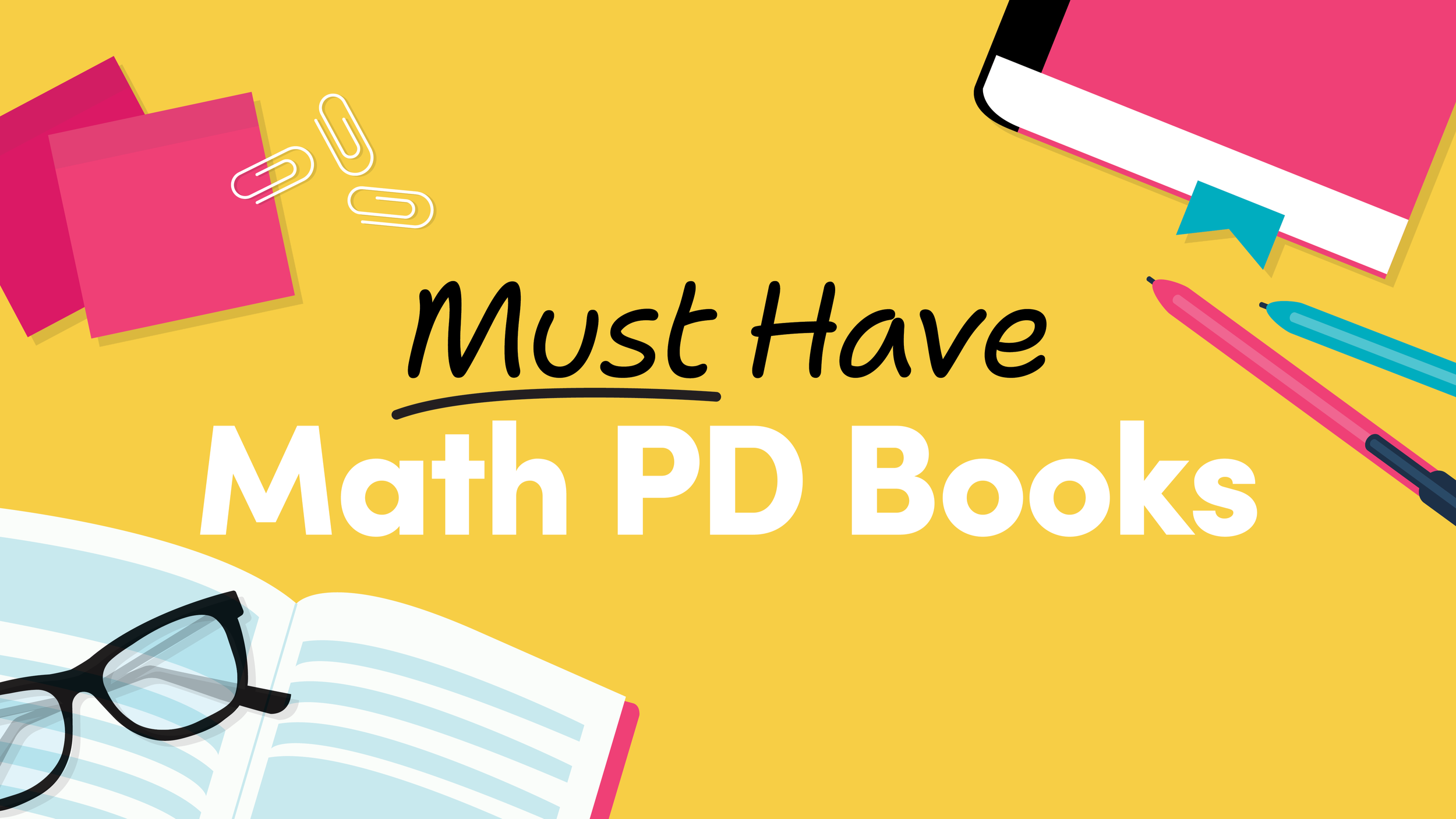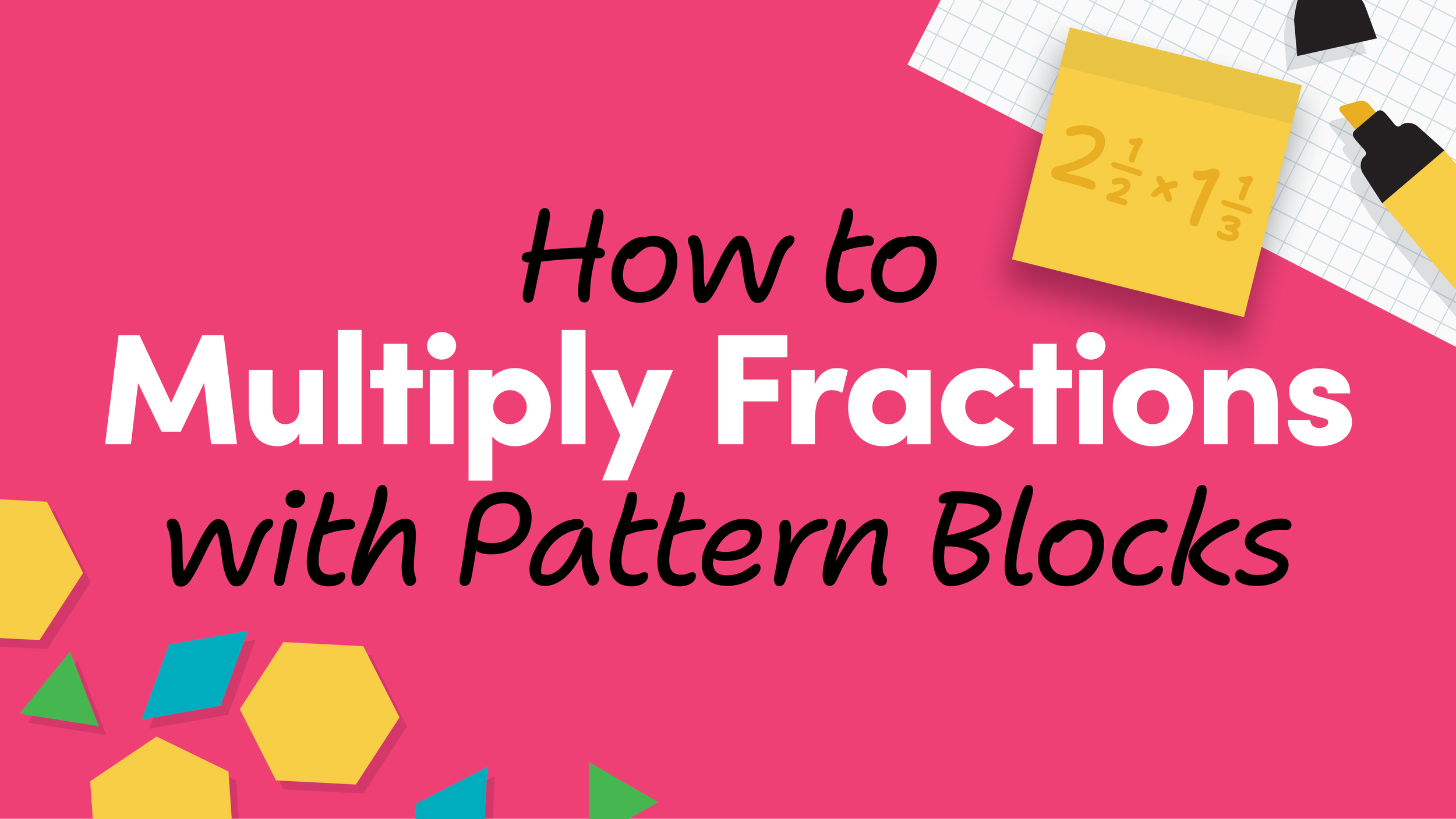Build a Better Math Block: Flexible, Student-Centered Planning
Discover how to plan an elementary math block that fits your students’ needs and your teaching goals. Explore flexible math block schedules, sample daily plans, and tips for structuring lessons. Make the most of your math time while avoiding the pressure to fit in every activity every day.
Must-Read Math Professional Learning Books for Upper Elementary Teachers
This guide highlights our favorite professional development books for upper elementary educators. Whether you want to deepen your content knowledge, build number sense, support diverse learners, or rethink your math instruction, these must-reads have you covered.
Teaching Math with Multiple Representations
Learn how to use multiple representations in your math classroom to build deep understanding and flexible thinking. This practical guide breaks down the five key types (physical, visual, symbolic, verbal, and contextual) and shares simple strategies for connecting them in meaningful ways.
What is the CRA Model in Math?
Concrete Representational Abstract (CRA) is a framework where students move from using hands-on (concrete) materials, to drawn representations, to abstract symbols. It’s also known as the CPA (concrete-pictorial-abstract) or CSA (concrete-semi concrete-abstract) model. This method is effective for building conceptual understanding and creating deep connections. In this post, you’ll see examples from each stage, understand the importance of the CRA model, and learn our top tips for success with the CRA sequence.
Incorporating Math Manipulatives Into Your Math Block
Part 5 of the Getting Started With Math Manipulatives in Upper Elementary series gives you a real-life look at how to incorporate math manipulatives throughout your math block. Explore classroom-tested ideas like partner gallery walks, concurrent small groups, and math starters that make hands-on learning feel natural and fun. Includes a free cheat sheet to help you choose the right manipulatives for every concept!
Planning Hands-On Lessons With Math Manipulatives
Part 4 of the Getting Started With Math Manipulatives in Upper Elementary series shows you how to plan hands-on math lessons using the CRA model (Concrete–Representational–Abstract). Learn how to make math concepts more visible with manipulatives, when to use them in instruction, and how to connect each phase of learning to build deeper understanding. Includes a free planning map to help you get started!
Managing Math Manipulatives to Save Time
Part 3 of the Getting Started With Math Manipulatives in Upper Elementary series focuses on classroom management strategies that make using manipulatives quick, efficient, and effective. Learn how to set routines, assign student roles, tighten transitions, and create clear expectations so your math block runs smoothly. Includes free posters and planning tools in the printable toolkit!
How to Organize Math Manipulatives With a Purpose
Part 2 of the Getting Started With Math Manipulatives in Upper Elementary series focuses on how to organize math manipulatives in a way that saves time and supports student learning. Learn how to store different types of manipulatives and make math tools more accessible for small group work. Includes free labels in the printable toolkit!
The Must-Have Math Manipulatives for Upper Elementary Classrooms
Part 1 of the Getting Started With Math Manipulatives in Upper Elementary series covers the must-have manipulatives every 3rd, 4th, and 5th grade teacher should have on hand. Discover essential tools for teaching whole numbers, fractions, measurement, and geometry—and get tips for auditing what you already have. Includes a free printable toolkit with resources to help you organize and manage manipulatives and plan highly effective hands-on lessons!
3 Engaging Math Games to Build Students’ Fraction Sense
Looking for fun and effective ways to teach fractions? This post shares three engaging math games that help upper elementary students build strong fraction sense through hands-on learning, number lines, and visual models. A free printable game is included!
3 Tips For Teaching Multiplicative Comparisons So They Stick!
Wondering how to teach multiplicative comparisons in a way that makes sense to students? This blog breaks down 3 essential tips to help students truly understand multiplicative comparisons.
5 Tips to Teach Fractions in 4th & 5th Grade
Teaching fractions in 4th and 5th grade often feels scary, especially if your own experience learning fractions in school left you confused and frustrated. But it doesn’t have to be that way for your students! You can turn fractions into a concept you love to teach and your students love to learn about. Here are my top five tips to make fractions more approachable, engaging, and meaningful in your 4th- and 5th-grade classroom.
4 Tips to Boost Student Engagement When Teaching Math
If you’re frustrated because your students just aren’t engaged in your math lessons, you’re not alone. I’ve been there too, and the good news is that it’s easy to fix! In this post, I share four free, easy-to-implement strategies that help you quickly boost engagement in your math classroom.
A Teacher’s Journey to Math Confidence and Empowerment
Read about fifth-grade teacher Crystal Harris, whose early experiences with math left her defeated, insecure, and confused. Through a journey of self-reflection and personal learning, Crystal gained confidence and became an empowered and engaged math teacher. If you’re feeling unsure and nervous about teaching math, this story is for you!
3 Essential Tips to Become an Effective Math Teacher-Leader
"3 Essential Tips to Become an Effective Math Teacher-Leader" offers actionable strategies for math coaches, specialists, coordinators, and team leaders looking to build trust and credibility with their colleagues. It helps teacher-leaders foster trust and create a stronger connection with their teams and with resistant colleagues.
How to Teach Multiplying Fractions with Pattern Blocks
Multiplying fractions is difficult to make hands-on. Many teachers simply don’t know how to use manipulatives to teach fraction multiplication in 4th and 5th grade! Using pattern blocks is a simple way to make it hands-on and make sure students develop conceptual understanding of fraction multiplication.
3 Tips to Increase Engagement and Deepen Thinking in Small Groups
Transform your small groups in 4th & 5th grade math with these 3 simple tips. Increase engagement, improve problem-solving, and deepen mathematical thinking in collaborative math small group work!
How to Create Math Toolkits for Your Students
If students end up not being able to share supplies, creating math toolkits for each student will be essential! Giving students access to both their own set of math manipulatives and math tools will be really helpful in keeping the learning hands-on for students.
Getting Started with Virtual Math Manipulatives
Just because working with physical manipulatives may be my preference for students, doesn’t mean that virtual manipulatives can’t play an important role in our classrooms too!
Why “I Do, We Do, You Do” Is NOT Always Best Practice for Teaching Math
If you’re like me, you likely were exposed to the gradual release model early on in your teaching career. You know… the “I do, we do, you do” lesson plan template most of us were given at some point by professors in college or administrators during our first few years teaching. The longer I taught and the more students I worked with, I eventually learned that “I do, we do, you do” is NOT always best practice for teaching students math.




















